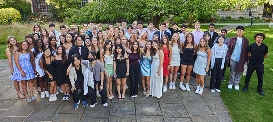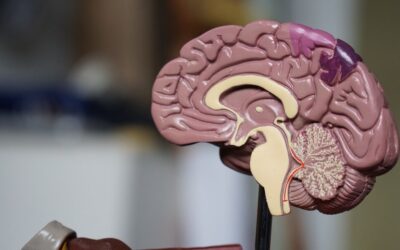Have you ever wondered why good people do bad things? Or why anyone would ignore someone in need of help? How about why anyone would conform to an extreme idea that they don’t agree with?
Throughout the history of psychology, many experiments have attempted to answer these questions—some of which would never be allowed today for ethical reasons. Many of these have been very influential within the field of social psychology and are still taught today.
Keep reading to hear about three of the most shocking and well-known social experiments.
1. The Stanford Prison Experiment
None of us would like to believe that we are capable of evil. However, Zimbardo’s infamous Stanford prison experiment showed that, actually, we all have this potential. It all depends on the situation.
Phillip Zimbardo was a researcher at Stanford University in America. In 1972, he recruited 24 mentally healthy, male, college students for an experiment taking place in a fake prison in the basement of Stanford. These participants were randomly allocated into 2 groups: prison guards and prisoners.
The guards received a uniform and mirrored sunglasses to wear for the job. Then, after being sent home, the prisoners were publicly arrested at their home on a Sunday morning. They were processed at a real police station before being transported to the ‘prison’.
No one could have predicted what would happen next.
The guards weren’t given any specific instructions on how to behave. Yet, very soon they began acting in extreme ways: they prevented prisoners from eating, took away their bedding, forced them to remove their clothes, and even punished them with chores such as cleaning toilets with their bare hands.
As well as this, the prisoners were submitting to the guards—even though they knew that they hadn’t actually done anything wrong and weren’t even in a real prison! After just thirty-six hours, a prisoner had to be extracted from the study as he had sunk into a deep depression with fits of rage and uncontrollable crying.
Just a few days later, other prisoners displayed similar symptoms. The guards also continued to abuse them. It was at this point that Zimbardo’s girlfriend told him he had to stop the experiment. It was shut down after just six days, despite Zimbardo intending it to run for fourteen.
This experiment demonstrates the power of the situation in influencing how we act. Good people, just like you or me, are capable of evil acts. But, the power of the situation doesn’t always have to be bad: it can also be a force for good.
Of course, we could never repeat this experiment for ethical reasons. This means that we need to assess how valid Zimbardo’s conclusions really are. For example, demand characteristics—how the guards assumed they should act—may have significantly shaped their behaviour.
2. The Bystander Effect
In 1964, Kitty Genovese was brutally murdered just outside her home. What makes this case so different is that thirty-eight witnesses were reported to be present at some point during this attack—all of whom failed to help her.
It was later shown that this didn’t quite happen how the newspapers had described. Few of the thirty-eight neighbours were actually aware of what was going on at the time. But, this still sparked a great interest in ‘the bystander effect’: the phenomenon that the more people there are present, the less likely someone is to help in an emergency situation.
Four years later, in 1968, John Darley and Bibb Latané went on to test this whether this effect held true. They put participants in a room, either alone or in groups with two other naïve participants or two confederates (researchers who pretend to be participants). They then filtered smoke into the room. The confederates remained passive as this happened.
The results of this followed the same shocking pattern as shown in the case of Kitty Genovese.
Participants were both least likely, and took longest, to report the smoke when with the passive confederates. Only 10% reported it when with them. This was slightly higher at 38% when they were in groups of three, but went all the way up to 75% when they were alone.
In the real world, this means that we are less likely to intervene in an emergency situation when surrounded by other people. And, we are even less likely when those people are also doing nothing.
It’s important to remember that this doesn’t make us bad people. The bystander effect happens for many reasons: we see other observers doing nothing and follow their cues, we believe we lack competency, or we simply expect someone else to take responsibility.
The best way to stop this happening is to know that the effect is there—so you are already one step closer to being the person who steps in to help out of a crowd of people.
3. Asch’s Conformity Experiment
Do you think you could be convinced to answer a question with the wrong answer, even when you knew the right one? Most of us would say no. However, Solomon Asch’s 1951 experiment suggests that both you and I probably can.
In this experiment, participants were simply asked to judge the size of a line compared to others. The answer to this was always very clear and unambiguous: in control trials participants gave the right answer 99% of the time. However, Asch placed participants in a group with confederates who all gave the wrong answer.
You might assume that participants would still give the answer they knew to be right. But, a surprising number of participants conformed to the group answer. Overall, they gave the wrong answer 37% of the time.
This experiment is so surprising to us because we generally don’t realise how much our beliefs can be influenced by others. In our everyday lives, we conform to ideas not because we believe they are true, but simply to avoid standing out from the group.
As with all of these studies, it is important to consider how valid these findings are. And, the answer seems to be that they are: a meta-analysis by Bond & Smith (1996) found a significant level of conformity across cultures and over time.
However, a very clever adaptation of this experiment which did not use confederates failed to find this effect.
Key takeaways from these famous psychology studies
These are three of the most influential and well-known experiments in the history of psychology.
Zimbardo taught us that good people are capable of doing bad things. Darley and Latané confirmed that we are less likely to help in an emergency when there are more people around. And, Asch showed how much we conform to group ideas.
If you enjoyed learning about the most interesting psychology experiments, consider signing up for our Psychology Summer School for high school students. At Oxford Scholastica, our Oxford summer school programmes give international students the chance to experience academic study at a higher level.
More interesting psychology studies and resources
Interested in becoming a psychologist, or just fascinated by the human brain? Uncover the world of psychology with our collection of insightful studies and resources. Delve into the ground-breaking split brain experiments, explore the psychology of a murderer’s mind, discover the secrets of success through the lens of psychology, and get inspired by books about ground-breaking psychological experiments. These articles will deepen your understanding of the human mind and provide a thought-provoking read.





